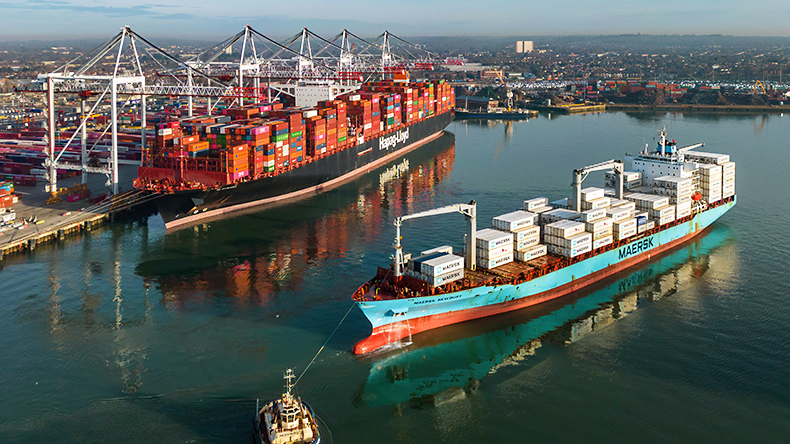
Hapag-Lloyd joins Maersk with major earnings upgrade as Red Sea Chaos reshapes shipping
HAMBURG : Hapag-Lloyd has followed in the footsteps of its future Gemini Cooperation partner Maersk with an upward revision of its earnings outlook for 2024, driven by stronger-than-expected demand and improved freight rates.
The revised guidance comes as the German shipping line released preliminary figures for the first nine months of 2024, reporting Group EBITDA of approximately USD 3.6 billion (EUR 3.3 billion) and Group EBIT of about USD 1.9 billion (EUR 1.8 billion).
“Given the current course of business, characterized by stronger than expected demand and improved freight rates, and despite increased expenses related to the necessary diversion of vessels around the Cape of Good Hope, the Executive Board of Hapag-Lloyd AG is raising its earnings outlook for the financial year 2024,” the company said in a statement.
Hapag-Lloyd now expects its Group EBITDA to range between USD 4.6 to 5.0 billion, up from the previous forecast of USD 3.5 to 4.6 billion. Group EBIT is projected to rise to USD 2.4 to 2.8 billion, compared to the earlier estimate of USD 1.3 to 2.4 billion. However, the company warned that the volatile freight market and geopolitical uncertainties could still pose risks to its forecast.
Final figures for the first nine months of 2024 are set to be published on November 14, 2024.
Maersk’s Parallel Upgrade Amid Red Sea Crisis
Hapag-Lloyd’s revised earnings outlook comes shortly after its future Gemini partner, A.P. Moller–Maersk, also raised its full-year financial guidance for the fourth time this year. The improved outlooks come as the shipping industry faces significant disruptions due to the instability in the Red Sea, where Houthi-led attacks on shipping routes continue to impact global shipping.
In a trading published earlier this week, Maersk revealed impressive Q3 results, including US $15.8 billion in revenue and an underlying EBITDA of US $4.8 billion.
As a result, Maersk upgraded its full-year forecast to an underlying EBITDA of US $11.0-11.5 billion, citing strong demand and persistent disruptions in the Red Sea region. As recently as this past February, the company expected 2024 EBITDA to be in the range of just US $1-6 billion.
Navigating Uncertainty
The instability in the Red Sea has also led Hapag-Lloyd and Maersk to adjust their operational strategies for Gemini’s launch in February. Due to safety concerns, the companies have opted to continue to reroute ships via the Cape of Good Hope to avoid the volatile Suez Canal route, a move that increases both transit time and costs but ensures greater safety for vessels and crews.
The alliance will implement a hub-and-spoke strategy across seven trade lanes, aiming for a 90% service reliability rate—a significant improvement over the current industry average of 53%.
As geopolitical tensions escalate in critical regions like the Red Sea, the global shipping industry faces an increasingly turbulent landscape. These disruptions are forcing carriers to adapt by rerouting vessels and adjusting operational strategies, reshaping traditional trade routes. While these challenges raise transit times and costs for shippers, they are also fueling a surge in freight rates, ultimately boosting the profitability of ocean carriers.

